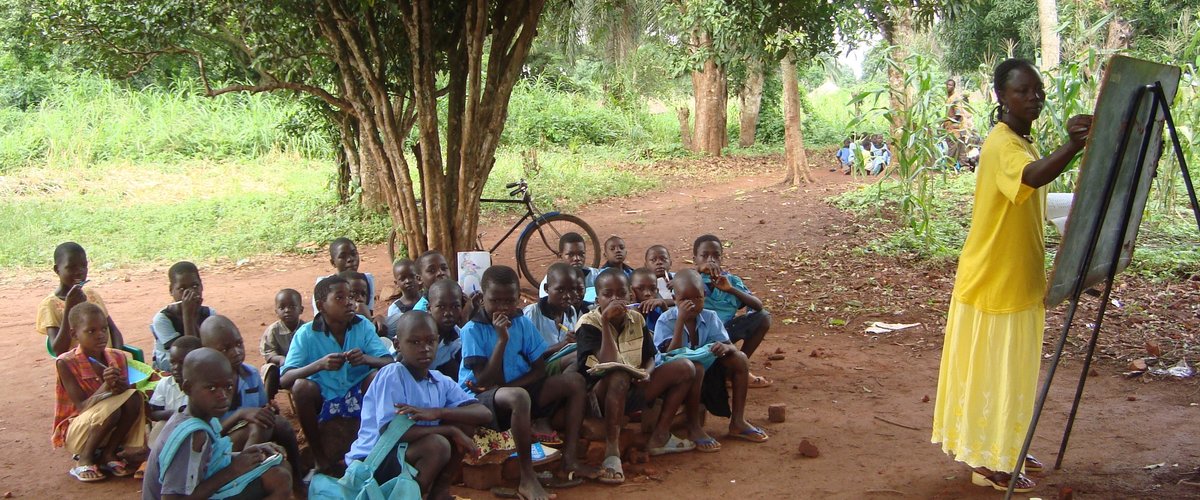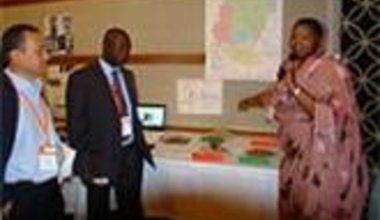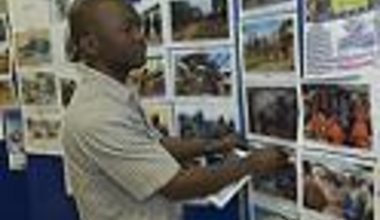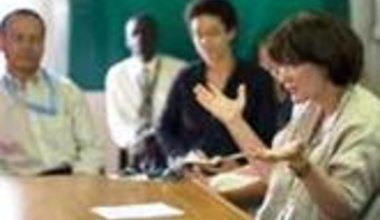Open air classes
Every weekday just after sunrise, Daniel James heads out for a four-mile trek to arrive on time at Ikpiro Primary School on the outskirts of Yambio, Western Equatoria State.
The 10-year-old boy then joins 161 students of various ages sitting on rough stones peering at a blackboard hanging on a tree trunk, writing in exercise books balanced on their laps.
Sheltering from the hot southern sun under mango, palm and lemon trees in their open-air classroom, the students shift position throughout the day, following the shade as the sun climbs higher in the sky.
Echoing the feelings of many of his classmates, Daniel said, "It is tiresome to come to school and go back home ... (and) it is uncomfortable to sit on stone for many hours. But I am glad to do it every day as long as I learn."
While students willingly endure the harsh conditions to study, they are defeated by sudden downpours during the rainy season (from May to October), which force them to abandon their books and seek refuge in nearby houses.
"It is disappointing to go back home without learning ... last week we didn't attend any class on Wednesday and Thursday due to rain," said Daniel.
Long-lasting deluges, as are typical in Southern Sudan, may also prevent young children like Daniel who live in distant villages from travelling home until late in the evening.
A major hindrance
School director Benjamin Anibi and his 12 teachers, who instruct classes up to primary eight, are discouraged by the school's primitive conditions. They believe the number of students will drop as many seek better facilities elsewhere.
"We have no classrooms, no desks ... only a small storeroom where we stuff all our things," the director said.
State officials acknowledge that poor facilities pose a major hindrance in educating their young people.
"Out of the 321 state-run primary schools ... about 15 per cent are child friendly with at least the basic facilities such as class rooms, desks, toilets and some kind of playground," said Wayo Herekia, Director of Primary Education in the state's Ministry of Education.
The remaining 85 per cent fail to meet minimum standards, with most lacking buildings and depending on trees for improvised shelter, Mr. Herekia added.
The education director noted that about 1.4 million students attended primary one to eight in 2008 and the number was expected to rise in 2009. "To accommodate the existing students, many schools use two shifts, while others rely partially or fully on tree ... classrooms."
Efforts are being made to improve schools by the Government of Southern Sudan (GoSS) and its partners, according to Director for Planning and Budgeting in the State Ministry of Education Gabriel Makana. "The GoSS allocates budgets for school buildings and other facilities ... local and international agencies also support the effort."
In 2009, some 13 primary schools were built throughout the state -- one by the GoSS, six by the non-governmental organization Mundri Relief and Development Association and three each by UNICEF and Save the Children Alliance.
But the number of new schools is low compared to the existing gap in facilities, said Mr. Makana. "We appreciate the joint efforts to address the school infrastructure problem in our state. However, more emphasis should be given to ... the seriousness of the situation."
The plight of Western Equatoria students is shared by others attending Southern Sudan's 155 secondary and 3,393 primary schools, according to GoSS Ministry of Education Deputy Director for Physical Planning and Construction. "About 60 per cent of the schools in Southern Sudan, mainly primary, are under trees."
No new secondary schools have been constructed in the region since 2005 and only five renovated, although plans are afoot to remedy that, said GoSS Education Ministry Director of Secondary Education Duku Azaria Enoka.
"The ministry has a plan to construct some 20 secondary schools in the 10 states from 2009 to 2011 with the help of government funding and assistance from the (World Bank) Multi-Donor Trust Fund. We believe this will solve the existing problem in access to secondary education," Mr. Enoka said.
 UN
UN United Nations Peacekeeping
United Nations Peacekeeping





